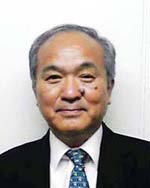Prof. Ichiro Imai
Prof. Ichiro Imai --- Keynote speaker

・Professor of Division of Marine Bioresource and Environmental
Science, Graduate School of Fisheries Sciences,
Hokkaido University
・Vice president of The Japanese Plankton Society
Major field: Plankton Biology and Ecology
Main Studies
・Life cycle strategies of the fish-killing raphidophyte Chattonella in temperate coastal sea and the bloom dynamics in relation
with life cycle, cyst physiology, and seed-population dynamics.
・Biological control of HABs utilizing nutrient-competing diatoms through germination of
resting stage cells in bottom sediments by artificial perturbation and lifting of
sediments in coastal sea.
・Prevention of HABs occurrences by using of algicidal bacteria inhabiting
on the surface of seaweeds and seagrasses: importance restoration of seagrass beds
and seaweed beds from the reclamation.
・Life cycle of diatoms, dinoflagellates and raphidophytes in coastal sea.
Abstract of Keynote Speech
Biological control of harmful algal blooms using algicidal bacteria associated with seagrass beds: Proposal for environment-friendly strategies for prevention
There is an urgent need for bloom mitigation and/or prevention strategies in aquaculture areas due to huge fishery damages by harmful algal blooms (HABs). Microorganisms such as bacteria appear to be promising control agents against red tides. Algicidal bacteria have actually been isolated from the coastal waters. Algicidal bacteria specifically associated with the occurrence and crash of red tides, and also contributed to the rapid termination of red tides in the coastal waters such as the Seto Inland Sea. New research indicates large numbers of algicidal bacteria attached onto the surface of seaweeds (maximum, million of killers per gram wet weight) such as Ulva sp. (Chlorophyta) and Gelidium sp. (Rhodophyta) without occurrences of any microalgal blooms. And further we discovered comparatively abundant existence of algicidal bacteria (ten times or more) including killers for Chattonella antiqua (Raphidophyceae) on the surface of leaves of seagrass (Zostera marina) and in seawater in Zostera bed with seaweed beds. The presence of the large number of algicidal bacteria indicates the potential for preventing HAB occurrences. We here propose new prevention strategies for red tides by cultivation of seaweeds in aquaculture areas. When we develop and restore the natural seaweed- and seagrass-bed as a part of Sato-Umi concept, these presumably function to prevent the occurrences of HABs. Further, restored seaweed and seagrass beds also serve as nursery grounds for important fisheries resources. In freshwater ecosystems, algicidal bacteria on the surface of water plants also play a similar role in preventing the occurrences of toxic blooms such as Microcystis aeruginosa and reservation of water plant zone would be a promising strategy for protecting waters from nuisance blooms.
